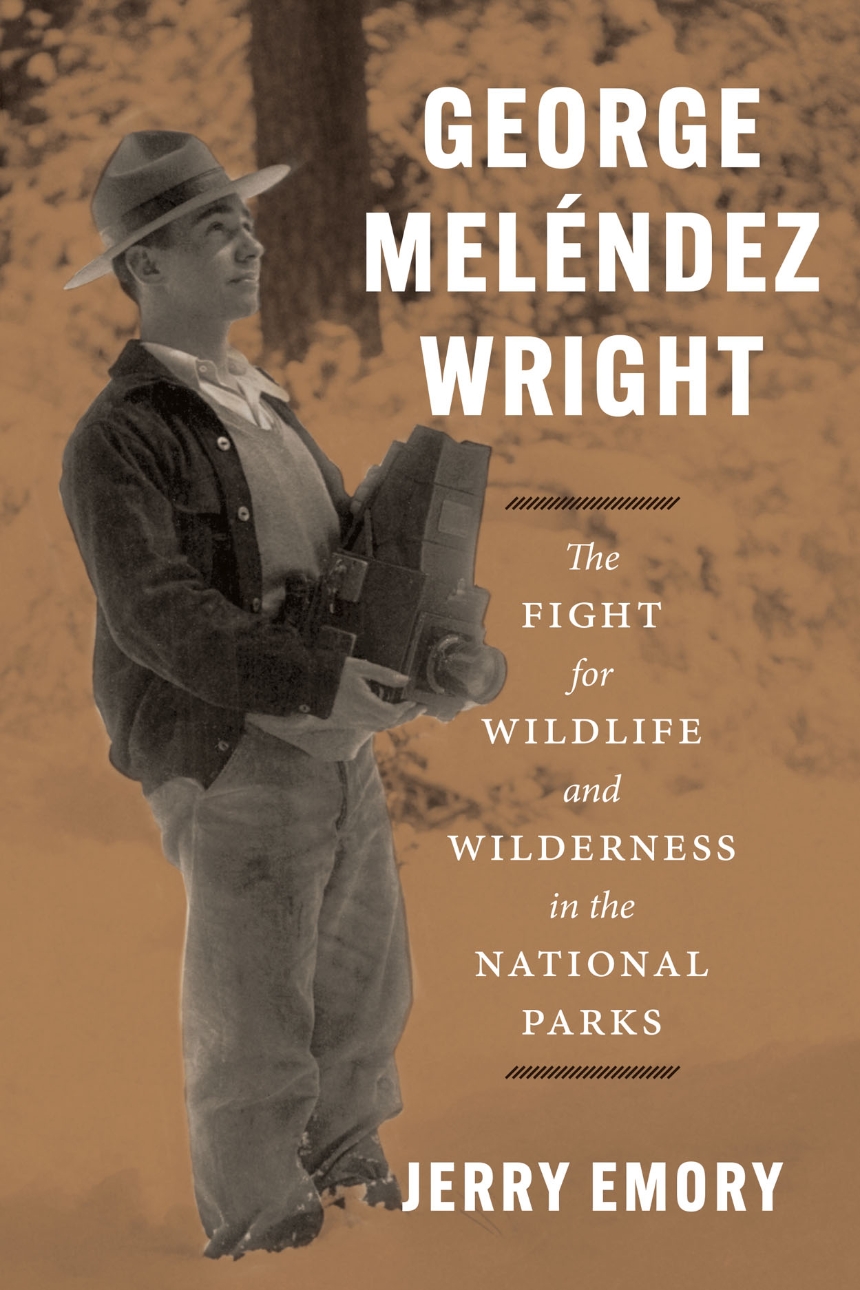George Meléndez Wright
The Fight for Wildlife and Wilderness in the National Parks
9780226849171
9780226824949
9780226824956
George Meléndez Wright
The Fight for Wildlife and Wilderness in the National Parks
The first biography of a visionary biologist whose groundbreaking ideas regarding wildlife and science revolutionized national parks.
When twenty-three-year-old George Meléndez Wright arrived in Yosemite National Park in 1927 to work as a ranger naturalist—the first Hispanic person to occupy any professional position in the National Park Service (NPS)—he had already visited every national park in the western United States, including McKinley (now Denali) in Alaska. Two years later, he would organize the first science-based wildlife survey of the western parks, forever changing how the NPS would manage wildlife and natural resources. At a time when national parks routinely fed bears garbage as part of “shows” and killed “bad” predators like wolves, mountain lions, and coyotes, Wright’s new ideas for conservation set the stage for the modern scientific management of parks and other public lands.
Tragically, Wright died in a 1936 car accident while working to establish parks and wildlife refuges on the US-Mexico border. To this day, he remains a celebrated figure among conservationists, wildlife experts, and park managers. In this book, Jerry Emory, a conservationist and writer connected to Wright’s family, draws on hundreds of letters, field notes, archival research, interviews, and more to offer both a biography of Wright and a historical account of a crucial period in the evolution of US parks and the wilderness movement. With a foreword by former NPS director Jonathan B. Jarvis, George Meléndez Wright is a celebration of Wright’s unique upbringing, dynamism, and enduring vision that places him at last in the pantheon of the great American conservationists.
When twenty-three-year-old George Meléndez Wright arrived in Yosemite National Park in 1927 to work as a ranger naturalist—the first Hispanic person to occupy any professional position in the National Park Service (NPS)—he had already visited every national park in the western United States, including McKinley (now Denali) in Alaska. Two years later, he would organize the first science-based wildlife survey of the western parks, forever changing how the NPS would manage wildlife and natural resources. At a time when national parks routinely fed bears garbage as part of “shows” and killed “bad” predators like wolves, mountain lions, and coyotes, Wright’s new ideas for conservation set the stage for the modern scientific management of parks and other public lands.
Tragically, Wright died in a 1936 car accident while working to establish parks and wildlife refuges on the US-Mexico border. To this day, he remains a celebrated figure among conservationists, wildlife experts, and park managers. In this book, Jerry Emory, a conservationist and writer connected to Wright’s family, draws on hundreds of letters, field notes, archival research, interviews, and more to offer both a biography of Wright and a historical account of a crucial period in the evolution of US parks and the wilderness movement. With a foreword by former NPS director Jonathan B. Jarvis, George Meléndez Wright is a celebration of Wright’s unique upbringing, dynamism, and enduring vision that places him at last in the pantheon of the great American conservationists.
Reviews
Table of Contents
Foreword
Preface: Field Notes and Family
Prologue: Serendipity
Chapter 1. The Magic Window
Chapter 2. University of California, Berkeley
Chapter 3. Summers: Alaska and the West
Chapter 4. Yosemite: Dream Achieved, 1927–29
Chapter 5. Am I Visionary, or Just Crazy?
Chapter 6. Beginnings: The Wildlife Survey, 1930
Chapter 7. The Intangible Beauty of Nature, 1931–33
Chapter 8. New Deal, Old Problems
Chapter 9. Outstanding Men
Chapter 10. It Looks Like a Resurrection
Chapter 11. Chapo
Chapter 12. Legacy
Epilogue: On a Good Day
Acknowledgments
Notes
Index
Preface: Field Notes and Family
Prologue: Serendipity
Chapter 1. The Magic Window
Chapter 2. University of California, Berkeley
Chapter 3. Summers: Alaska and the West
Chapter 4. Yosemite: Dream Achieved, 1927–29
Chapter 5. Am I Visionary, or Just Crazy?
Chapter 6. Beginnings: The Wildlife Survey, 1930
Chapter 7. The Intangible Beauty of Nature, 1931–33
Chapter 8. New Deal, Old Problems
Chapter 9. Outstanding Men
Chapter 10. It Looks Like a Resurrection
Chapter 11. Chapo
Chapter 12. Legacy
Epilogue: On a Good Day
Acknowledgments
Notes
Index
